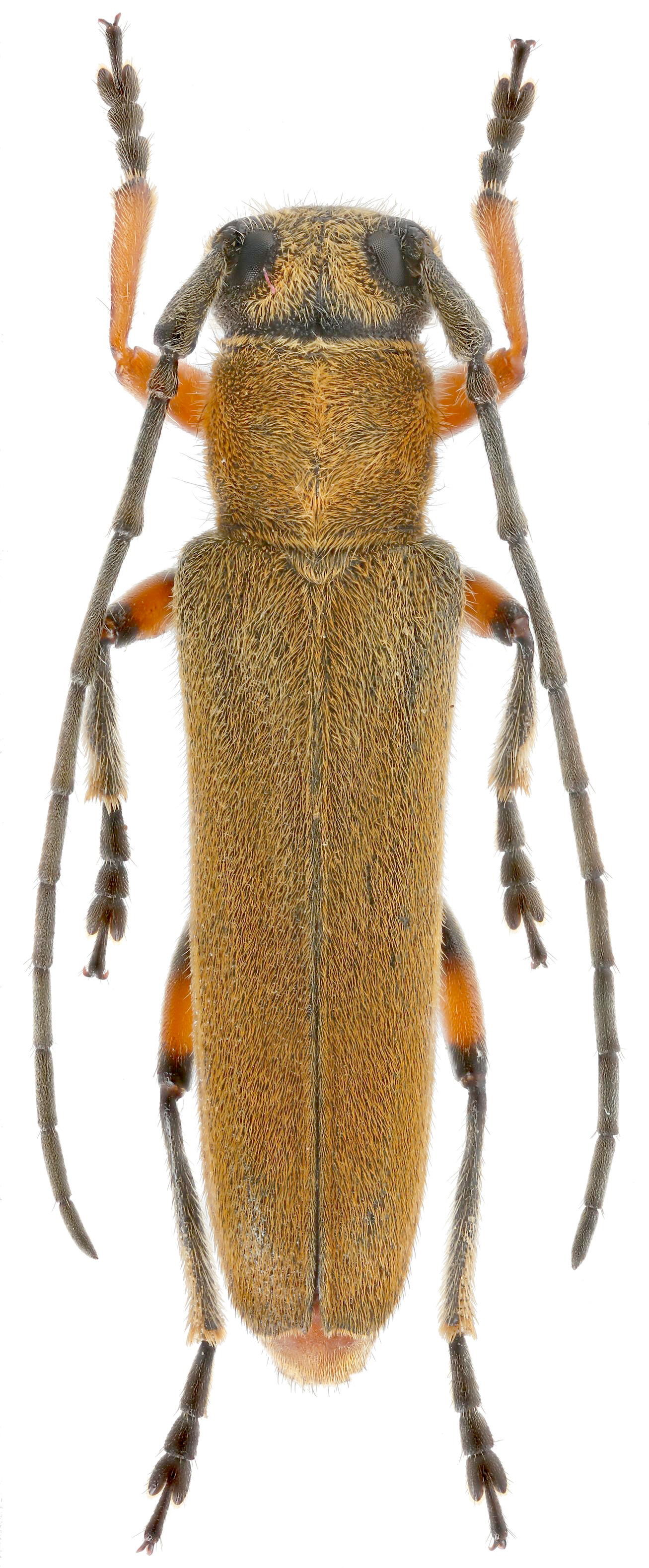Phytoecia (Phytoecia) aenigmatica, a rare species known from Iran and Eastern Turkey, has been described from Northeastern Iran by Gianfranco Sama, Pierpaolo Rapuzzi and Martin
Rejzek in 2007 [❖]. Ph. aenigmatica cannot be confused with any other known species of the tribe Phytoeciini. The following features make this
taxon distinctive: body densely covered with brown-yellow pubescence, thin antennae, with 1st segment gradually thickened towards apex, 3rd segment shorter than 4th,
and 3rd segment of hind tarsi conspicuos longer than broad. The species resembles subgenus Neomusaria, but, if examined more closely, it evidently
belongs to Phytoecia s. str. [❖]. After all, this is also indicated by the occurrence of adults exclusively on plants from the Apiaceae family
(Ferula sp., Conium maculatum), which is typical for the subgenus Phytoecia [❖][✮].
| Body length: | 9 - 11 mm |
| Life cycle: | 1 year |
| Adults in: | April - May |
| Host plant: | probably Apiaceae (Ferula sp., Conium maculatum) |
| Distribution: | Iran, Turkey [✮] |
The depicted beetle was collected in Sisakht (سیسخت) environs (Central District of Dana County, Kohgiluyeh and Boyer-Ahmad province, Iran).
Collected by Denis G. Kasatkin
[❖]
Sama G., Rapuzzi P. and Rejzek M.:
New or interesting Phytoeciini from the Middle East, especially from Iran (Coleoptera: Cerambycidae).
Folia Heyrovskyana) (Series A), 14 (4): 163-179, 2007.
[download  ]
]
[✮]
Rapuzzi P., Sama G., Tusun S., Cebeci H., Özdikmen H., Baiocchi D., Magnani G., Rapuzzi I., Geçit M.:
The longhorn beetles (Coleptera Cerambycidae) of Mardin province (Turkey) with the description of two new species and one new subspecies
Humanity space - International almanac 2 (3): 461-482, 2021.
[download  ]
]


